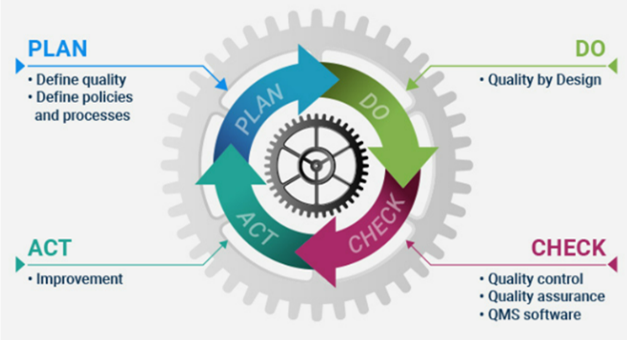Date Published November 2, 2022 - Last Updated January 20, 2023
Quality is about doing the right thing, at the right time, for the right reasons! Quality Mindfulness is an approach practiced that delivers a consistent and exceptional customer experience. It’s an established mindset that commits the team to delivering consistent services in a seamless manner with a focus on a quality outcome. Confidence is key to anything we do involving our customers and business.
This accountability is critical in our day-to-day responsibilities of servicing customers in all that we do to manage the technology lifecycle. We practice incident, problem and change management to document the issue, resolution and troubleshooting efforts. We leverage this discipline to investigate opportunities to work better together and understand why these reoccurring issues continue to impact the business. Basically, what is needed is a broader real-time problem management approach to quickly identify root cause and enable us to understand what happened, or more importantly what did not happen and why.
Our responsibility to our customers is to always deliver quality services and equipment. When quality is not top-of-mind, the standards and results are compromised and causes a rippling impact that is time-consuming to the customer, the business, and our teams.
In reflection after troubleshooting, diagnosing, and creating workarounds until we ultimately resolve it - we should ask ourselves, “Why and how did this issue reoccur and was it something caused by a lack of quality management?” The team should always work together to better understand why reoccurring issues occur and what we can do to identify the who, what, where, when, how, and why. This is the correct rigor required in real-time problem management to prevent issues from continuing to occur.
We should take great pride in the quality of our work and in how we service our customers. At times, we are challenged by rising workloads, SLA adherence, resource constraints, unplanned events, unexpected challenges/changes and the need to always satisfy our customer demands. I am confident that you will be able to reap the benefits of increased productivity, efficiency, and customer satisfaction if you commit to always:
- Engaging and involving other team members
- Challenging the operational checklist of how we always do it by modifying what’s no longer relevant, what’s not working and what needs to be added/updated.
- Patience, planning and being proactive are the important factors when working to be quality mindful. Don’t rush to failure just because you are under pressure or told to do so.
- Devise a plan to make every process more efficient and productive with an established date to assess and review. Remember, execute the plan first and then measure the results.
- Making an individual and team commitment to hold yourself and others accountable to “Get the job done” while always sharing and communicating with stakeholders.
The Challenge: Commit yourself and team to practicing the art of Quality Mindfulness. Spread The Word Through Results.
I first learned of W. Edwards Deming and Total Quality Management (TQM) while researching why Toyota was able to beat other car manufacturers in sales by offering well-made, reliable cars at the same or less cost. Mr Deming identified a particular set of rules and created a checklist called the Deming Cycle which, when followed, would continually improve the quality standards of a company. The Plan, Do, Check and Act (PDCA) Cycle is a simple yet straightforward group of steps that can drastically help improve quality standards by either providing newer solutions or solving existing problems. lied to life as well – it can be used by one to improve on a personal basis too.
Lastly, I would like to share with you my passion and lessons learned for Quality Mindfulness over the many years of leading teams that service customers.
- Based on my experience working in Customer Service for many years, quality is flawlessly meeting and always working to exceed the customer’s expectations.
- I find confidence and loyalty in a company, product, or service that consistently delivers quality in all that they do. The important characteristics of quality are reliability, uniqueness, efficiency, convenience, durability, and, always, integrity. When I feel connected to a quality product, I am invested and feel confident in sharing and promoting it with others.
- Quality is going above and beyond in everything we do. In simple terms, it’s about never sacrificing it for any reasons with any excuses.
- Quality represents the “undisputable best-in-class” and signifies the standard of excellence. No one wants an “inferior” or “substandard” product or service.
- This level of quality takes commitment and the right resources to meet the standard of excellence and remain the “best” though it’s lifecycle.
- Quality means performing an action or service with an unwavering dedication to excellence. A person’s reputation for quality is based on their attitude, approach, experience, and honesty, and people trust them to always do the right thing in the right way.